It is widely believed that life originated in the deep oceans. But new evidence points to an active volcanic landscape
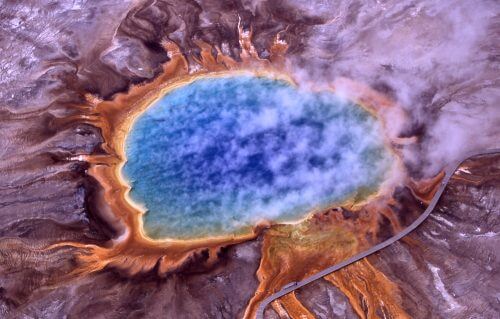
- In order to create life on Earth, energy was needed to create complex molecules and ways to connect these molecules together.
- A system of volcanic pools and terrestrial hot springs contains the ingredients necessary for life, and wet-dry cycles to allow connections between molecules and natural selection.
- The established theory of volcanic-terrestrial origins of life, as opposed to one that focuses on the ocean, directs us to other places in the solar system in search of life.
Total darkness. We scratch as we make our way through bushland in northwest Australia, aided only by the pale light of the GPS screen. The light is too weak to illuminate fallen trees that block the dry channel along which we walk, and we come across them again and again. We are two geologists working in a remote area of Australia known as the Pilbara: Diokitz in front and Van Kernendonk a few steps behind. Our car, parked somewhere on a small plateau, seems a long way away. We do not know for sure if the batteries of the GPS device will be enough to direct our paths back. The night sky, glowing with an infinite number of stars right up to the horizon, twinkles like an amazing spectacle as Jupiter travels hand in hand with nearby Venus. Unfortunately, this spectacle does not help the navigation of the two scientists groping their way through remote areas of Australia in June 2014.
While climbing the bank of the gorge, Diokitz suddenly stumbles back down. Did she lose her balance? To stop her from falling, Van Kernendonk reaches out and pushes her back up. In response, she shrieks, says something unclear, and finally stammers: "Eh.. so... so.. Bish!" Diokitz did not fall at all. She tried on herself, while trying to remove the thick cobwebs that wrapped around her. Spiders have a bad name in Australia, and rightfully so. In the dark, it's not a good idea to assume you've accidentally encountered a harmless spider.
The reason we groped our way through the Pilbara at night is because we spent the day enthralled by a new discovery Diokitz made in 3.48-billion-year-old sedimentary rocks called Dresser configuration. Some of the stones are made of wrinkled orange and white layers, called geyserite, and they were formed by the activity of a volcanic geyser. The stones contained bubbles that were formed when gas was trapped in a sticky layer of mud, presumably gas created by a thin layer of bacteria-like organisms. The stones with signs of the bacterial layer supported a new idea for solving one of the oldest mysteries in our world: how and where life began. The evidence pointed to pools and volcanic hot springs, on land, about 3.5 billion years ago.
This is a completely different picture of the beginning of life than the one scientists have been painting since 1977. That was the year Research submarine Alvin She discovered hydrothermal vents at the bottom of the Pacific Ocean, which emit minerals containing iron and sulfur and gases such as methane and hydrogen sulfide, surrounded by primitive bacteria and large worms. It was a thriving ecosystem. Biologists hypothesized that such outcrops, protected from the catastrophes that destroyed the Earth's soil four billion years ago, could have provided the energy, nutrients, and protection necessary for the formation of life. But this opinion is problematic. The biggest problem is that the ocean has a lot of water, and the necessary molecules may be dispersed too quickly to react and form cell membranes and a primitive metabolism.
Now, I and others believe that terrestrial ponds that dry out and fill with water periodically may be much more successful places for life to form. In pools there is heat that stimulates chemical reactions, periods of dryness in which complex molecules, called polymers, can be formed from simpler units, periods of abundant water that flood these polymers, and again periods of dryness that deposit them in tiny spaces where they can react with each other and even concentrate into sections of acids Fat - the prototypes of cell membranes. Diokitz discovered solid geological evidence that Dreser, now an arid wasteland, once resembled the steaming pools and erupting geysers of Yellowstone Park In the USA, an active geothermal field. And everywhere in the Dresser Formation there are fossil signs of life closely related to an ancient system of hot springs. Although the Dresser Formation is not the site where most primitive life began half a billion years ago, it has shown us that continental hydrothermal vents existed very early in Earth's history. Charles Darwin hypothesized, already in 1871, that bacterial life was created "in some warm reed". Several scientists from different fields now believe that the author of the book "On the Origin of Species" intuitively made an important discovery. And the implications of these ideas reach far beyond our planet: in the search for more life in the solar system, a theory that advocates the development of life on land can direct us to different places and planets than those we would look for based on a theory of the development of life in the ocean.
From Russia with love
Ten years before Diokitz's encounter with the spider's web, one of us (Deemer) showed that volcanic springs can encourage the formation of compartments made of membranes, which are essential for the demarcation of living cells of any kind. Diemer led a group of scientists to the volcanoMutnovsky, an active volcano on the peninsula Kamchatka in the Russian Far East. The team explored a site that simulates the conditions on Earth four billion years ago, before life formed. Dimer's hypothesis was that when simple molecular building blocks are exposed to the dry-wet cycles that characterize terrestrial hot springs, they may combine into longer polymers that carry information, such as nucleic acids, necessary for the growth and reproduction of primitive life. peptides, other essential polymers, may be formed from amino acids under the same conditions. And another essential step, other building blocks, called lipids, may connect into microscopic compartments that can house the information-carrying polymers and protect them. Life needs all of these compounds to get started, and Motnovsky has plenty of hot springs and geysers to test this hypothesis.
1.
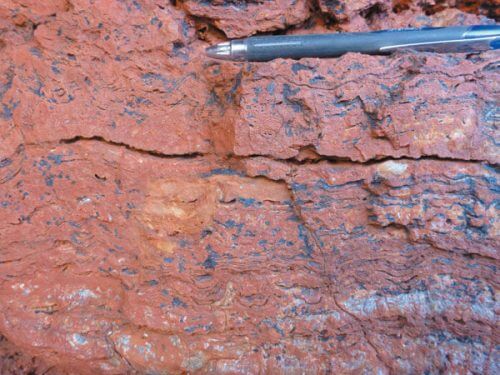
2.
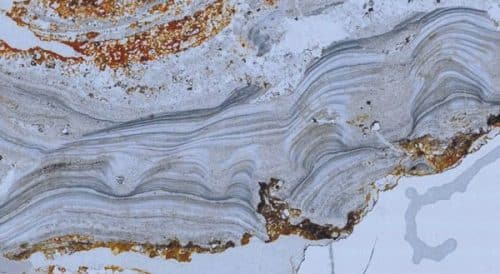
3.
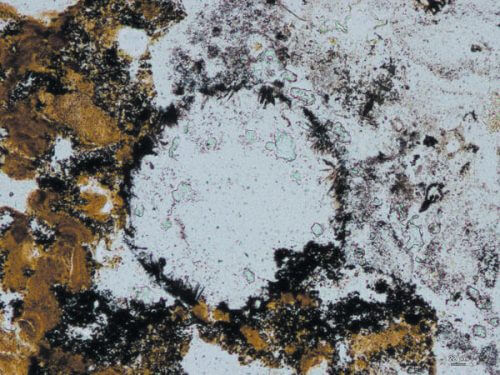
Dimer brought with him a bottle of white powder that contained raw materials that were apparently available on Earth before the formation of life, including four amino acids and the four chemical bases that make up the nucleic acids found in nature, as well as phosphate, glycerol and lipids. He poured the mixture into the center of a small, boiling spring. Within minutes, white foam appeared around the edge of the spring. The foam consisted of countless tiny vesicles, each containing compounds that were present in the original broth. If the sections dry around the edges of the puddle, will their contents, which were already dense, combine to form polymers? Could this be the springboard to the first life? Back in the lab, Diemer and his colleagues tested the idea by mixing simple nucleic acids called nucleotides with lipids. The mixture underwent wetting and drying cycles under acidic conditions and high temperatures such as those prevailing in the Kamchatka pool. The result: polymers from 10 to more than 100 nucleotides in length. Follow-up studies using X-ray diffraction showed that the polymers are similar to ribonucleic acid, i.e. RNA. Moreover, these polymers were wrapped in lipids so that countless microscopic compartments called precursor cells were formed (protocells). Although not life, they are clearly an important step towards the formation of life.
Dimer performed only a few wet-dry cycles, and in his experiments relatively simple molecules were obtained. His computer science colleague at the University of California, Santa Cruz, Bruce Diemer, believes that more cycles will add another important feature: survival of the fittest. Each dehydration cycle, Dimer believes, will cause the lipid membranes of the small vesicles to open, allowing polymers and other building blocks to mix. During the next wetting cycle, the lipid membranes will be recoated with different polymer blends, each representing a natural experimental species. The chance of more complex progenitor cells to survive is higher because of the more diverse molecular mix that stabilizes the progenitor cells in different environmental conditions. Thus, one set of molecules will help under certain environmental conditions, while a second set under other conditions. These progenitor cells will therefore survive and pass on these polymer series to the next generation, thus moving up the evolutionary ladder. Diemer realized that this model is similar to a kind of chemical computer that "initializes" the functions of life, starting with random "programs" that are written in the form of polymers.
In 2015, Diemer added a third stage to the two-part cycle: an intermediate stage between wet and dry. The idea came up during a field trip with the authors of the Dresser configuration in search of another stromatolites, which are fossilized layers of bacterial surfaces and some of the earliest evidence of life on Earth. Diemer walked in the desert next to the granite rocks known as the Gallery Hill, and they are covered with rock engravings by the aborigines called petroglyphs. Along the way, he noticed brown, dry microbial surfaces in small depressions in the rocks. Out of curiosity, Dimer poured water on the surfaces, and they immediately came back to life, turning green and jelly-like. He realized that if the dry-wet cycles in the original springs had also included a moist phase, where the surviving progenitors would have huddled together in a similar jelly, polymers and building blocks could have mixed and exchanged with each other through the barriers of the lipid membranes. This community of cooperating progenitor cells could have provided even more opportunities to pinpoint the most successful molecules for survival. In fact, forty years before, the scientists George Fox וCarl VossThe late proposed the term "prognot" for such a collaborative early stage. Fox told Deimer that this term matched his pre-cellular gel.
springs of innovation
The bubbles and mineral composition that Diokitz found in the Dresser Formation suggested a high probability of the three-phase cycle occurring, and we published the evidence in May 2016 in Nature Communications. Once we realized that the Dresser Formation was filled with hot springs in a geothermal system, it became clear to us that it also contained many of the key elements and organizational structures necessary for life to form. There was an energy source in the form of a stream of hydrothermal fluids, rich in hydrogen, heated by the magma below. The stones contained an abundance of the element boron (B), essential in the synthesis of ribose, a sugar that makes up nucleic acids such as RNA. The Dresser also has phosphates that dissolve from the rocks and dissolve in the stream of acidic geothermal fluids. phosphate It is an important component of nucleic acids, but is also used by all life forms wherever they are asATP (adenosine triphosphate, the molecule that provides energy inside cells). In addition, in hydrothermal vents and sediments of volcanic lakes that have evaporated, one can find high concentrations of zinc and manganese, elements found in many enzymes in the cytoplasm of cells from all branches of the tree of life. Finally, the Dresser Formation also has clay, which can catalyze the formation of complex organic molecules because it contains electrically charged mineral layers.
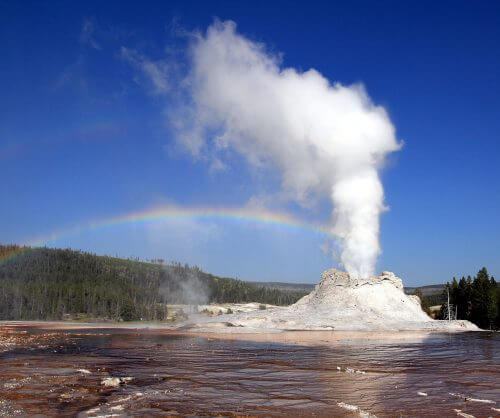
Perhaps the most exciting thing about Dresser as a site that simulates the formation of life is its incredible diversity, because in this field of science, diversity is definitely the spice of life. The Dresser Formation is dry and rocky today, but in ancient times, fields of hot geothermal springs like this area contained many hundreds of pools, each with slightly different levels of acidity, temperature, dissolved ions, and other chemical variants. The chemical complexity is high in such fields because they contain three very active interfaces - between water and rock, water and air, and rock and air. The fields also have different temperatures at different points. Multiply all of these together: the wet-dry cycles that occur several times a day (as in the geysers in Yellowstone), diverse chemistry of the pools, particularly chemically active interfaces, the ability of the pools to transfer compounds between them while the geysers spray their contents back and forth, and a network of underground channels Bottoms as a result of cracks, filled with liquids that connect the pools to each other. When you take all these into account, it seems that a geothermal field of 100 springs can produce a million combinations of conditions or even more every year!
Each warm lake becomes an "innovation pool", a kind of experimental bed where more adapted combinations of molecules quickly emerge and find ways to grow and reproduce or alternatively unsuccessful combinations are abandoned and unable to meet the requirements. It is likely that an enormous rate of recombination was required to produce the initial primitive version of life, and that the process took hundreds of millions of years. But the number of combinations in continental geothermal fields suggests that life could have formed and started to develop even within 10 million years, and that the first stages could have started as soon as a stable continental crust dotted with volcanic lands formed between the oceans, just over four billion years ago.
A sea of disputes
Not everyone agrees that terrestrial hot springs are the most likely site for life to form. The deep sea chimney hypothesis is still alive and kicking. At NASA's Jet Propulsion Laboratory, biochemist Mike Russell developed Alvin's original hydrothermal vent discovery into an elegant, if still unproven, alternative model. According to this idea, mineral membranes that form tiny holes in the chimney rocks first separate the alkaline water of the chimneys from the more acidic ocean water. This produces an acidity difference of several pH units, similar to the difference between a household ammonia solution and a glass of orange juice. The difference in acidity is a form of energy that can be used: modern bacterial cells do just that to make the ATP they need. There is another source of energy in chimneys, in a mixture of dissolved gases such as hydrogen and carbon dioxide. Russell and his colleagues proposed that when carbon dioxide in the water of the ancient oceans mixed with hydrogen from the chimneys, the transfer of electrons from the hydrogen to the carbon dioxide could synthesize more complex organic molecules. In their view, the mineral compartments are similar to cells, and the energy of the pH differences and hydrogen could have eventually evolved into a primitive metabolism used by the earliest life forms. The two hypotheses, that of the hot springs and that of the chimneys in the depths of the ocean have far-reaching implications. Beyond delineating the direction of future research on how life began on Earth, they aim at different approaches to searching for life in other stars and moons. If the chimney hypothesis is correct, then it is worth looking for life in the frozen oceans of Enceladus וEUROPE. On the other hand, if our model of hot springs is correct, these worlds are unlikely to support the formation of life.
What about Mars? Although there is good evidence for the existence of shallow seas in Mars' distant past, there is little sign of a global ocean or regions of tectonic movement such as those that created hydrothermal vents on Earth. If the formation of life depends on chimneys, it is unlikely that there is life on the red planet. But if life on Earth originated in terrestrial hot springs, life may have originated on Mars as well, since it had the elements of hot springs, that is, extensive volcanic activity and water. Indeed, in 2008, Itar Spirit SUV 3.65-billion-year-old hot spring sediments in the Columbia Hills on Mars, about the same age as the Dresser Hot Springs, which have superbly preserved early evidence of life on Earth.
There is a long way to go before it will be possible to prove either of the two models, that of the ocean chimneys or that of the terrestrial hot springs. The origins of life are like a multi-part assembly, and we don't have enough knowledge to put each piece in its right place. In the Dresser Formation, for example, we do not understand what causes certain elements to concentrate in different pools, how the geothermal fields develop over time, or how their different chemical environments react to build or break down organic molecules. We need to design more sophisticated experiments to study the chemistry of pre-life in a series of small hot pools, to test how complex organic molecules are formed and how they react and combine when wrapped in lipid membranes.
Both on land and in the sea, chemical and physical laws have provided a useful framework for the study of these particular questions, and the geological and chemical discoveries described here fill parts of the aggregate. What is exciting is that you can now see a path towards a solution.

One response
What's the wonder? Did anyone think otherwise?
The main condition for existence of life is water. But available energy is also required to utilize the energy cascade between different states. This is provided by a volcanic environment, not necessarily deep or shallow water.
It seems to me that the surprise expressed by the writer is misplaced.